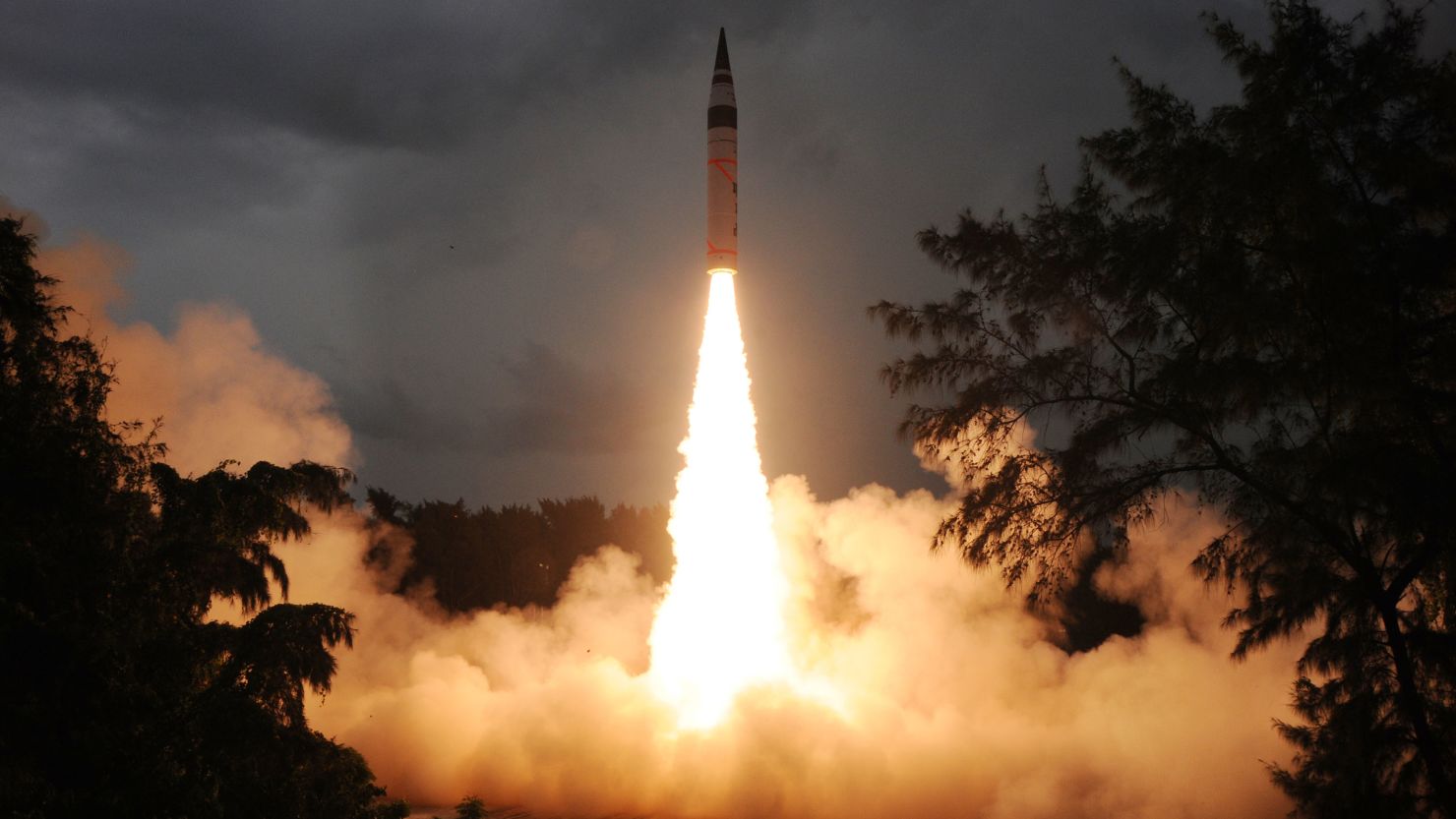India said Monday it had joined the world’s top nuclear powers by mastering the ability to put multiple warheads atop a single intercontinental ballistic missile.
The successful test of multiple independently targetable reentry vehicle (MIRV) technology on the indigenously developed Agni-V ICBM puts India in a club that includes the United States, Russia, China, France and the United Kingdom.
Neighboring Pakistan has also claimed to have MIRV technology, but experts say the claim is unverified.
Indian Prime Minister Narendra Modi praised the country’s scientists for the development, one of a series announced by his government months before a national election. The prime minister is seeking a rare third consecutive term in power.
“Proud of our DRDO [Defence Research and Development Organisation] scientists for Mission Divyastra, the first flight test of indigenously developed Agni-5 missile with Multiple Independently Targetable Re-entry Vehicle (MIRV) technology,” Modi said X on Monday.
Indian scientists conducted the test at a facility on Abdul Kalam Island in the Bay of Bengal, off India’s northeast coast, the Defense Ministry said in a statement.
“Various Telemetry and radar stations tracked and monitored multiple re-entry vehicles. The Mission accomplished the designed parameters,” the statement said.
India did not give an exact number of reentry vehicles released during the Agni-V test, but MIRVed missiles can carry a dozen or possibly more MIRV warheads.
Indian Defense Minister Rajnath Singh congratulated scientists and the team behind the test. “India is proud of them,” he wrote on X.
Home Minister Amit Shah called it a “a momentous day for our nation,” adding that the technology will “further accelerate” Modi’s vision of a “self-reliant Bharat (India).”
Each warhead, once released in space from the rocket that missile that carried it aloft, can be programmed to hit separate targets up to 1,500 kilometers (932 miles) apart, according to the Center for Arms Control and Non-proliferation.
Overall, the Agni-V missile has a range of more than 5,000 kilometers (3,100 miles), according to the Center for Strategic and International Studies Missile Defense Project. That puts India rivals like China and Pakistan well within range of the weapon.
A decades-old technology
MIRV technology is not new. The United States first deployed it in 1970 with the Minuteman III ICBM, according to the National Museum of the US Air Force.
The Minuteman III was designed to carry three warheads, but the US missiles now only carry one to comply with arms control treaties with Russia.
MIRVed missiles present a problem for ballistic missile defenses because interceptor missiles have to contend with a number of warheads traveling to targets hundreds of miles apart.
They are also considered “destabilizing” weapons, according to experts, as they present tempting first-strike targets.
“This creates a ‘use them or lose them’ scenario—an incentive to strike first in a time of crisis. Otherwise, a first strike attack that destroyed a country’s MIRVed missiles would disproportionately damage that country’s ability to retaliate,” according to a website posting from the Union of Concerned Scientists.
India’s announcement of MIRV capability comes as rival China has been expanding its nuclear forces in a similar fashion.
The US Defense Department’s 2023 report to Congress on China’s military said Beijing “is developing new ICBMs that will significantly improve its nuclear-capable missile forces and will require increased nuclear warhead production, partially due to the introduction of multiple independently targetable reentry vehicle (MIRV) capabilities.”
China and India share a disputed border in the Himalayas, where deadly clashes have occurred as recently as 2020.




